#real time analytics
Text
ERPNext for Real Estate: Streamline Your Business with Sigzen Technologies
In the dynamic and competitive world of real estate, efficient management and streamlined operations are critical to success. Real estate companies handle a multitude of tasks daily, from managing property listings and client interactions to tracking leads and processing payments. Traditional methods of managing these activities often lead to inefficiencies, data silos, and missed opportunities.…

View On WordPress
#ERP#ERPNext For RealEstate#ERPSolutionsForRealEstate#Innovation in Real Estate#Real Estate Management#Real Time Analytics#Real-time Inventory#RealEstate Technology#RealEstateERPSoftware
0 notes
Text
#cloud call center#cloud calling#real time analytics#voip technology#business voip#voip solutions#voice broadcasting#voice message#entrepreneur#b2b#whatsapp business api#bulk sms#sms api
0 notes
Text
How to intelligently monitor and react to the changes in your #realtimeanalytics system using #DataActivator in #microsoftfabric? In this end-to-end #tutorial, I explain core Data Activator components and demonstrate their usage. Check out here:
https://youtu.be/SkBCbmSA9sE
0 notes
Text
The Evolution of Data Analytics: Trends Shaping the Future
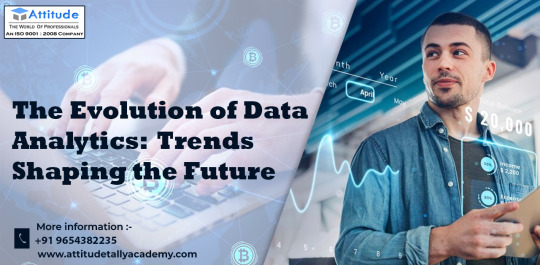
Introduction:
In the dynamic realm of modern business, data analytics stands as the beacon guiding strategic decisions and driving innovation. From its humble beginnings of basic data processing to the sophisticated real-time analytics of today, the evolution of data analytics reflects a journey marked by adaptation to technological breakthroughs, shifting consumer dynamics, and the evolving demands of industries. This article embarks on an exploration of this evolutionary path, uncovering the trends that are sculpting the future of data analytics.
Unveiling the Journey:
The roots of data analytics stretch back to the early stages of computing, where rudimentary techniques were employed to glean insights from structured data. However, the explosion of data volumes coupled with the quest for deeper insights soon rendered traditional methods obsolete. This catalyzed the emergence of more advanced data analytics techniques, setting the stage for a paradigm shift in how data is processed and utilized.
Embracing Transformational Trends:
Real-Time Analytics:
In today's hyper-connected world, the need for instantaneous insights has become paramount. Real-time analytics stands at the forefront of this demand, enabling businesses to process and analyze data as it flows in, facilitating immediate action and decision-making. Whether it's monitoring customer interactions, tracking market trends, or identifying anomalies, real-time analytics empowers organizations to navigate the dynamic landscape with agility and precision.
AI and Machine Learning:
The integration of Artificial Intelligence (AI) and Machine Learning (ML) has ushered in a new era of predictive and prescriptive analytics. These technologies empower organizations to uncover intricate patterns, forecast future trends, and optimize decision-making processes across diverse domains. From personalized recommendations in e-commerce to predictive maintenance in manufacturing, AI-driven analytics fuels efficiency and innovation, reshaping industries and redefining possibilities.
Data Democratization:
Gone are the days when data analytics was confined to the realms of data scientists and IT specialists. The democratization of data analytics has democratized access to data and analytical tools, empowering employees across departments to explore, visualize, and derive insights independently. This democratization fosters a culture of data-driven decision-making, amplifying organizational agility and innovation at all levels.
Edge Analytics:
As the Internet of Things (IoT) continues its exponential growth, edge analytics emerges as a pivotal trend. By processing data at the edge of the network, closer to the data source, organizations can unlock real-time insights while minimizing latency and conserving bandwidth. From optimizing operations in smart cities to enhancing safety in connected vehicles, edge analytics propels the efficiency and efficacy of IoT applications, driving transformative outcomes.
Looking Towards Tomorrow:
As we peer into the horizon of data analytics, the future appears brimming with promise, fueled by emerging technologies such as quantum computing, blockchain, and augmented analytics. Quantum computing holds the potential to revolutionize data processing capabilities, solving complex problems at unprecedented speeds. Blockchain technology ensures immutable and transparent data transactions, fortifying trust and security in analytics processes. Augmented analytics, empowered by AI, automates data preparation and insight generation, democratizing access to analytical capabilities and catalyzing innovation across industries.
Conclusion:
The evolution of data analytics trends is a testament to human ingenuity and technological prowess, reflecting our relentless pursuit of innovation in the quest for knowledge and efficiency. From its nascent stages to the precipice of a new era, data analytics continues to evolve, propelled by the convergence of AI, IoT, and emerging technologies. By embracing these trends and harnessing the power of data, organizations can chart a course towards success, navigating the complexities of the data-driven world with confidence and foresight.
Join us as we embark on this exhilarating journey through the ever-evolving landscape of data analytics, where every discovery brings us closer to unlocking the boundless potential of data-driven insights.
Suggested Blogs: -
Data visualization and statistical analysis tools
marketing analytics
data analytics best practices
0 notes
Text
Unlocking the Power of Data at the Edge: The Marriage of Edge Computing and Big Data
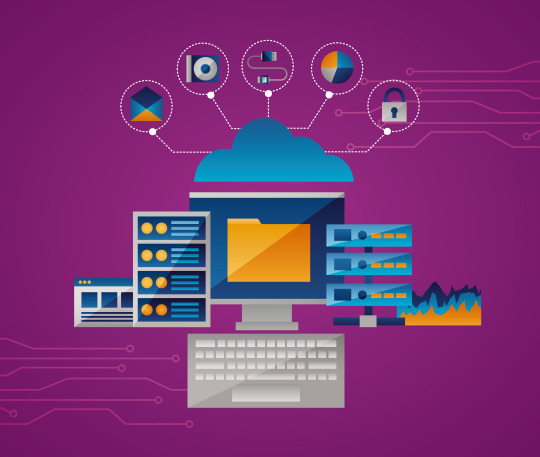
In the not-so-distant past, the idea of processing and analyzing vast amounts of data on devices like smartphones, sensors, and industrial machines seemed like a pipe dream. Data had to travel to centralized servers or cloud data centers for analysis, which often resulted in latency issues and delays in decision-making. But the landscape of data processing is rapidly evolving, and in the spotlight today is the dynamic duo of "Edge Computing" and "Big Data."
Imagine a world where data is not just generated and sent to a distant server for analysis but is analyzed right where it's created, at the edge of the network. This is the promise of edge computing, a paradigm that's reshaping the way we think about data processing.
The Rise of Edge Computing
Edge computing is a distributed computing model where data processing occurs close to the data source, i.e., at the "edge" of the network. It brings computation and data storage closer to where data is being generated, reducing latency, improving response times, and enabling real-time decision-making. This is particularly crucial for applications that demand low-latency, such as autonomous vehicles, IoT devices, and industrial automation.
One of the primary drivers behind the adoption of edge computing is the exponential growth of data. With the proliferation of IoT devices and sensors, we're drowning in data. Traditional cloud computing architectures struggle to cope with the sheer volume of data generated in real-time. Edge computing steps in as a practical solution, allowing businesses to process and filter data locally before sending only relevant information to the cloud or data center.
The Marriage of Edge Computing and Big Data
Enter big data – the juggernaut of modern data analytics. Big data refers to the large and complex datasets that are too massive for traditional data processing applications to handle. It's all about collecting, storing, and analyzing data to extract valuable insights. The synergy between edge computing and big data is where the magic happens.
Here's how they work together:
Data Filtering and Reduction: Edge computing helps filter data at its source. Instead of sending raw, unprocessed data to a central server, edge devices can preprocess and filter the data, sending only the most critical information for further analysis. This reduces the volume of data that needs to be transmitted and stored, cutting down on bandwidth and storage costs.
Real-time Analytics: Edge devices can perform real-time analytics on the filtered data. For applications like self-driving cars, immediate decision-making is paramount. Edge computing allows these vehicles to process sensor data in real-time, making split-second decisions without relying on a remote server.
Improved Privacy and Security: Since sensitive data remains closer to its source, there's less risk of data breaches during transit. This is particularly significant for applications that deal with personal or sensitive information.
Scalability: Edge computing can easily scale by deploying additional edge devices as needed. This scalability is crucial as data volumes continue to grow.
Faster Response Times: With data processing occurring at the edge, response times are significantly reduced. This is a game-changer for applications that require instant responses, like augmented reality experiences or remote robotic surgery.
Real-World Applications
The fusion of edge computing and big data has far-reaching implications across various industries:
1. Healthcare
Imagine a scenario where wearable devices continuously monitor a patient's vital signs and send this data for real-time analysis at the edge. Any anomalies can trigger immediate alerts to healthcare providers, potentially saving lives.
2. Smart Cities
In smart cities, sensors can monitor traffic conditions, air quality, and energy consumption. Edge computing can process this data locally to optimize traffic flow, reduce pollution, and improve energy efficiency.
3. Manufacturing
In manufacturing, sensors on machines can detect defects or signs of wear in real-time. This information allows for predictive maintenance, reducing downtime and saving costs.
4. Retail
Retailers can use edge devices to analyze customer behavior in stores. This data can be used to personalize marketing, optimize store layouts, and improve customer experiences.
5. Agriculture
In agriculture, sensors in the field can monitor soil conditions, weather, and crop health. Edge computing can provide farmers with actionable insights for precision agriculture.
Challenges and Considerations
While the marriage of edge computing and big data is promising, it comes with its share of challenges. Edge devices often have limited processing power and storage capacity compared to centralized servers. Managing a distributed edge infrastructure can also be complex.
Moreover, ensuring data consistency and security across edge devices requires robust strategies. Data must be synchronized, and security measures must be in place to safeguard sensitive information.
Conclusion
Edge computing and big data are transforming the way we handle data, making real-time analysis and decision-making a reality. This powerful combination is poised to drive innovation across industries, from healthcare and manufacturing to retail and agriculture.
As technology continues to advance, we can expect edge computing to become even more integral to our lives, enabling a new era of efficiency, responsiveness, and data-driven insights. The edge is where the action happens, and it's redefining the possibilities of what we can achieve with the ever-expanding sea of data at our fingertips.
0 notes
Link
#live analytics/analysis#real time analytics#sports Live analytics/analysis tools#Live analytics/analysis software#sports video analysis#professional video analysis
0 notes
Text
not to be a sociologist on main but the responses of like “of course high femmes don’t ‘not do anything,’ we put effort in through xyz means” don’t really do it for me. like instead i wanna ask why is the idea of sex that isn’t (physically) “reciprocal” morally reprehensible to you? why do you prioritize reciprocity over consent? why is laziness a bad thing, and why do you talk about leisure sex in terms of work? do you actually want to be doing what you’re doing?
anyway high femme 🤝 ace 🤝 sex worker solidarity because i really only see these kinds of conversations happening in the latter two spaces
#maybe it’s just me but the majority of real time analytical conversations i see from high femmes are about butch/femme not stoneness#femme#stone femme#high femme#pillow princess#mac.txt#ok to reblog if you’re so inclined#but what gets it for me is high femme
2K notes
·
View notes
Text
Man. I just get so actually legitimately sad each time I remember that toh ended and that we live in the post-toh world. Like it really is over.
Ms Dana Terrace has said that she'd like to do more given the chance (and after some quality time off of bigger projects, just to chill), but as far as we know, it's the end.
Heck, we barely got anything after the final episode, no books, no special merch, no dedicated little chibi shorts, nothing really, aside from the, thankfully fun, get-togethers of the cast and crew!
Idk. Ah well actually nah, I do know, that this show just meant an enormous lot to me. Incredibly huge, the kind that you can't break away from and wouldn't want to anyway. The kind that feels like, man, where would I be without it.
Happy 1 Year, to the end of The Owl House. Thank you, The Owl House.
I hope the future is bright, for all of us.


#The Owl House#TOH#Owl House#and tbh. its also why I havent exactly been posting as much!#I just. really miss it man.#and thinking so hard of how great it all was. gets me choked up for real lol.#I do hope theres more for us in the future. I really cant say for certain.#Cause to be less sentimental and more analytical for a moment#TOH was d1sney's biggest original ip hit that wasnt a movie for both such a long time and in a good long time!#Yes yes the internet doesn't always entirely mean the reality of things (which is why financially bcg is their biggest hit technically)#but to actually think back upon it all#TOH always had news articles and video essays and huge followings on tons of communities#especially on youtube! which isn't that easy! Youtube will always be dominated by bigger named things so the fact that toh DID get trending#number 1 more than once? Was incredibly impressive. And not just that but the viewer demand and count were through the roof! Huge in general#television numbers. All to say that is is that toh was an enormous hit. both financially and to people. so. yeah. It's. kind of in the air?#I guess? that no one really knows what could happen. I mean hell amph1bia is still getting books.#Granted....lets not forget ofc that disknee really. really. reaaaally doesnt. like. toh. ×^| but who knows!#personally? still hoping for a save the light styled game someday. or just some game that I can play on my switch someday.#but yep! Enough of my rambling. Thank you for everything The Owl House. really. Truly.
15 notes
·
View notes
Text
sometimes it takes really really paying attention to the lyrics for a song to sink in for me
sometimes what the artist is saying makes me very sad
#the sillies#i wanted to leave it in the tags bc i’m scared but#this is about sex drugs and rock and roll because ow#the way /i/ heard it this time was like calling out the fanbase to an extent#i know there’s some crazy shit that’s gone down with will woods fans#and that a lot of older fans have a lot of feelings about it#honestly i feel real bad because like#he’s been through some shit man and all that extra nonsense likely didn’t help#anyway#it just makes me sad when artists have batshit fans#it ruins it in a way like- man if i was a singer and my fans were fucking crazy i’d wanna quit all the time despite it being something#i really like to do you know?#anyhow i’ll leave you with these lines from the song#/newsfeeds groupies critics analytics/#/and starry-eyed stalkers who demand a man in lipstick/#/and a role model psycho but an echo in their chamber/#especially that second one#like he’s changed#and for the better! for himself!#maybe i’m way off#but there’s another line from a song in icimi that i can’t quite remember the song or line exactly#it’s a little foggy#but something along the lines of:#but im not that guy anymore and i made goddamn sure he’s dead#anyway this is a lot of nonsense#and maybe i’m wrong?#that’s why i didn’t put it in the post haha-
2 notes
·
View notes
Note
like a year and a half ago I was so intimidated by you I was like ☹️it probably thinks I'm lame as fuck it's so cool but I am so lame and now im out here being like "Finnegan lavendorri set me on fire and stole my wife but it's chill because it's a caterpillar"
TOP TEN ASKS THAT MAKE ME FLAP MY HANDS ND SMILE LALWAYS iye am also lame wer are one and the same
#finnbox#IT NEVER OCCURRED TO ME THAT SOME PEOPLE FIND ME INTIMIDATING IM JUST A KIND OF ANALYTICAL FAIL GUY#not to be genuine and sincere on main but i havent had a real online friend that ive clicked with and wasnt#afraid to commit to#ive been fucked over time and time again by people online and after my last internet friends mocked my attempt i kind of decided never to#all this to say that YOURE COOL!!!! and i LIKE YUO!!!!!!!!!!!!!!#my list of internet friends is still reserved and humble but i like it that way#and even people im not close to yet still feel vital to my little blog enclosure#IDK I WROTE THIS ON AND OFF TRYINF TO PAY ATTENTION TO A SHOW IM WATCHING W A FRIEND AI IF IT SOUNDS WEIRD#OR DISJOINTED OR RAMBLY BLAME IT IN THAT NOT ON ME BEING CHEESY OR SAPPY OR LAME
7 notes
·
View notes
Text
Simplifying Manufacturing: A Deep Dive into ERPNext Solutions Offered by Sigzen Technologies
Manufacturing can be complex, but there’s a game-changing solution called ERPNext that’s making things simpler. Imagine a powerful tool that helps businesses run their production smoothly – that’s exactly what ERPNext is all about. Sigzen Technologies is at the forefront, making sure businesses get the most out of this revolutionary system. In this blog, we’ll explore how ERPNext, with Sigzen…
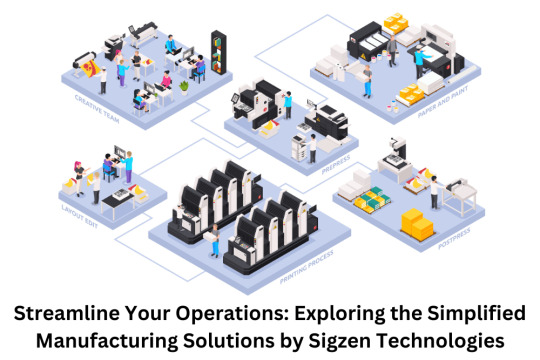
View On WordPress
#Business Innovation#Enterprise resource planning#Inventory Management#Lean Manufacturing#Manufacturing Efficiency#Real Time Analytics#Tech Innovation
0 notes
Text
How to intelligently monitor and react to the changes in your #RealTime #Analytics data? In this #tutorial, I introduce you to Data Activator service in #Microsoft Fabric. I explain core Data Activator/Reflex components and demonstrate their usage.
Check out here: https://youtu.be/SkBCbmSA9sE
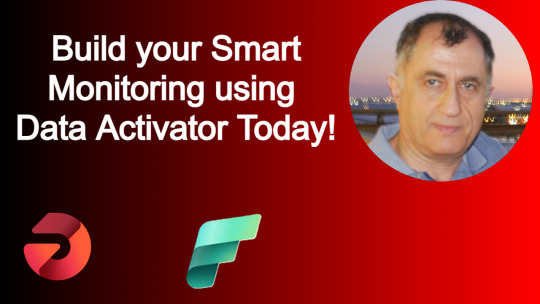
1 note
·
View note
Text
The Evolution of Data Analytics: Trends Shaping the Future
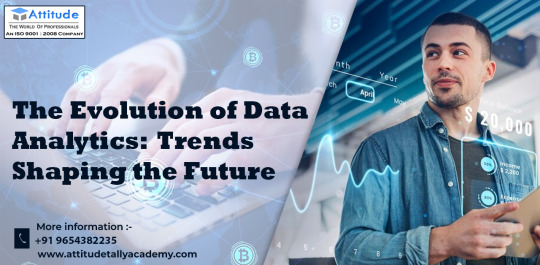
Introduction
In today's data-driven world, the landscape of data analytics is constantly evolving, propelled by technological advancements, changing consumer behaviors, and industry demands. From traditional batch processing to real-time analytics, the journey of data analytics has been transformative, with each phase bringing new possibilities and challenges. In this blog, we delve into the evolution of data analytics and explore the trends shaping its future.
The Rise of Data Analytics:
The inception of data analytics dates back to the early days of computing when businesses relied on basic data processing techniques to gain insights from structured data. However, with the exponential growth of data volumes, coupled with the need for deeper insights, traditional methods became inadequate. This paved the way for the emergence of sophisticated data analytics techniques.
Data Analytics Trends:
1. Real-Time Analytics:
One of the most significant trends shaping the future of data analytics is the shift towards real-time analytics. In today's fast-paced environment, businesses need instant insights to make timely decisions. Real-time analytics enables organizations to process and analyze data as it is generated, allowing for immediate action. Whether it's monitoring customer interactions, tracking market trends, or detecting anomalies, real-time analytics empowers businesses to stay agile and responsive in a dynamic marketplace.
2. AI and Machine Learning:
Artificial Intelligence (AI) and Machine Learning (ML) are revolutionizing the field of data analytics by enabling predictive and prescriptive analytics capabilities. By leveraging AI and ML algorithms, organizations can uncover hidden patterns, forecast future trends, and optimize decision-making processes. From recommendation systems in e-commerce to predictive maintenance in manufacturing, AI-driven analytics is driving efficiency and innovation across industries.
3. Data Democratization:
Another notable trend is the democratization of data analytics, wherein access to data and analytics tools is no longer confined to data scientists or IT departments. With the rise of self-service analytics platforms and user-friendly visualization tools, employees across departments can explore data, create dashboards, and derive insights independently. This democratization fosters a data-driven culture within organizations, empowering employees at all levels to make informed decisions based on data.
4. Edge Analytics:
As the Internet of Things (IoT) continues to proliferate, edge analytics is gaining prominence. Edge analytics involves processing data at the edge of the network, closer to the data source, rather than transmitting it to a centralized data center. This approach reduces latency, conserves bandwidth, and enables real-time insights in remote or bandwidth-constrained environments. From smart cities to connected vehicles, edge analytics is driving efficiency and innovation in IoT applications.
The Future of Data Analytics:
Looking ahead, the future of data analytics promises even greater advancements fueled by emerging technologies such as quantum computing, blockchain, and augmented analytics. Quantum computing holds the potential to revolutionize data processing capabilities, enabling organizations to solve complex problems at unprecedented speeds. Blockchain technology offers immutable and transparent data transactions, enhancing trust and security in analytics processes. Augmented analytics, powered by AI, promises to automate data preparation, insight generation, and decision-making, further democratizing access to analytics capabilities.
In conclusion,
The evolution of data analytics trends is a testament to the relentless pursuit of innovation and the transformative power of technology. From batch processing to real-time analytics, the journey has been marked by continuous adaptation to changing needs and emerging trends. As we stand on the cusp of a new era in data analytics, fueled by AI, IoT, and emerging technologies, the possibilities are limitless. By embracing these trends and leveraging the power of data, organizations can unlock new insights, drive innovation, and stay ahead in a data-driven world.
Stay tuned as we continue to explore the fascinating world of data analytics and its evolving landscape
Suggested Blogs: -
Data visualization and statistical analysis tools
marketing analytics data analytics best practices
0 notes
Text
Harnessing Amazon Kinesis in Machine Learning and Artificial Intelligence
Dive into the world of real-time AI and ML with Amazon Kinesis – harnessing data's power in motion. #AI #ML #AmazonKinesis #RealTimeAnalytics
The field of Machine Learning (ML) and Artificial Intelligence (AI) is progressing at an astonishing pace, driven by the availability of vast amounts of data. This abundance of data serves as the fuel for training and refining models, propelling the advancements in this exciting domain. Amazon Web Services (AWS) has played a pivotal role in this ecosystem, offering a wide range of services and…

View On WordPress
#Alerts#Amazon Kinesis#anomaly detection#artificial intelligence#Cost Management#data analytics#data ingestion#data quality#data transformation#fraud detection#IoT#machine learning#monitoring#natural language processing#Personalization#predictive maintenance#real-time data processing#Real-time Predictions#scalability#Security#Streaming Data
2 notes
·
View notes
Text
Why deal with Google Analytics when you could use the best analytics plugin instead?

Hint: It's Parse.ly.
#no one actually uses GA for real time anyway#try parse.ly instead#now available on wordpress#content analytics#parse.ly#analytics#google analytics
17 notes
·
View notes
Text
my first draft of my capstone is a week overdue so i’m trying the ole sleep deprivation method (i.e. no sleep til it’s done) but now it’s 3am i’ve faffed my way into getting one more page done and the harsh reality that this paper is truly not going to write itself is setting in. what the fuck gives
#ik the real issue is ‘no more gas in the tank’ which is just#the natural result of cranking out 5-10 page papers every other week to sometimes several times a week for the last month#all research based btw hence the misery#like. i could slaughter an analytical essay give me an argumentative prompt and i’ll hash that out in an hour#but please for the love of god stop asking me to produce. i have no more thoughts. my zotero is pleading for mercy#if i can stave off burning out for just one more month i’ll make it but Holy Fuck Lmao#gnashing my teeth tearing my hair etc etc let me OUTTT let me outtttttt 😭😭😭😭#i can’t keep living like this!!! please no more long term projects i can’t take it anymore
2 notes
·
View notes